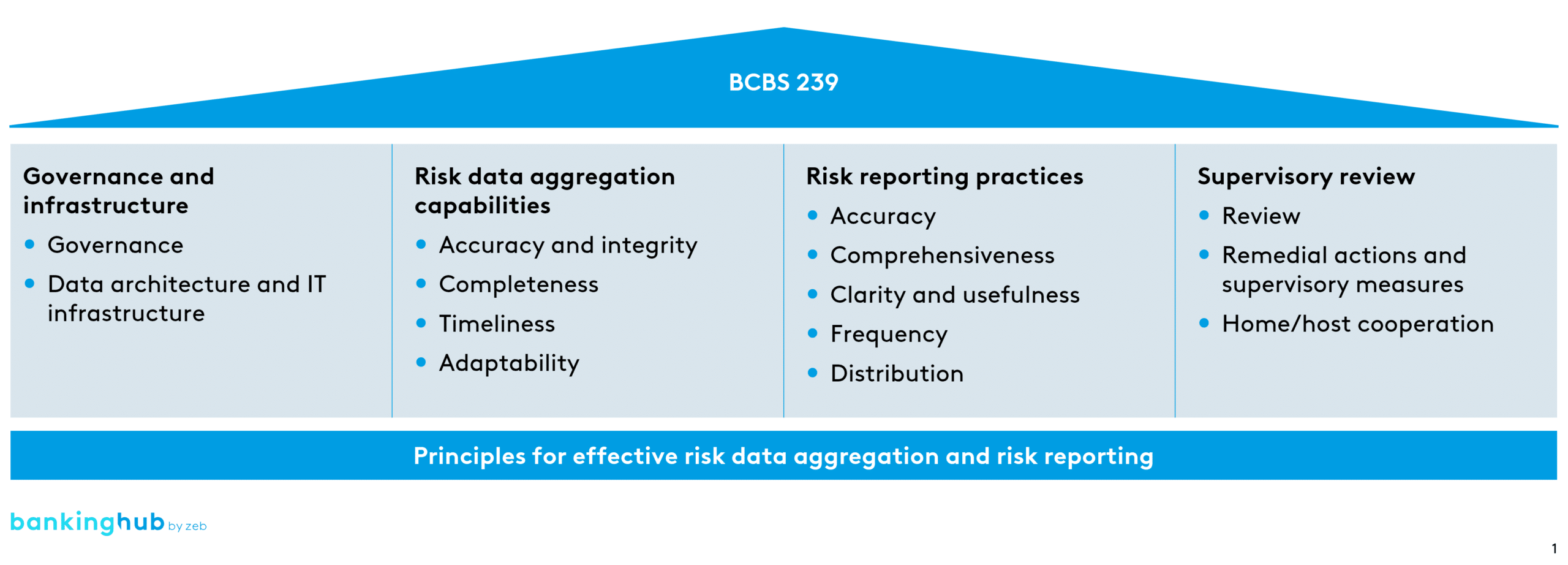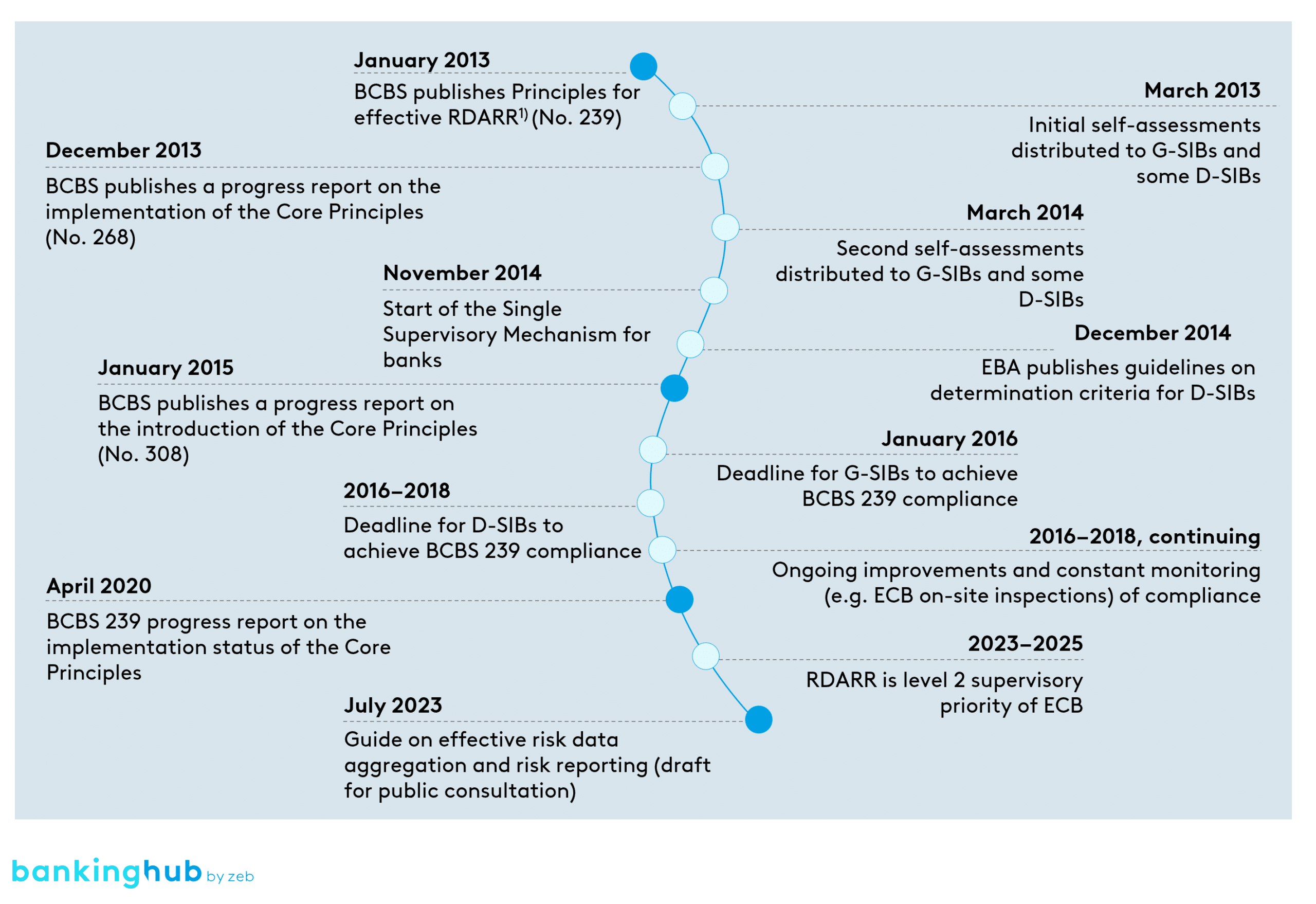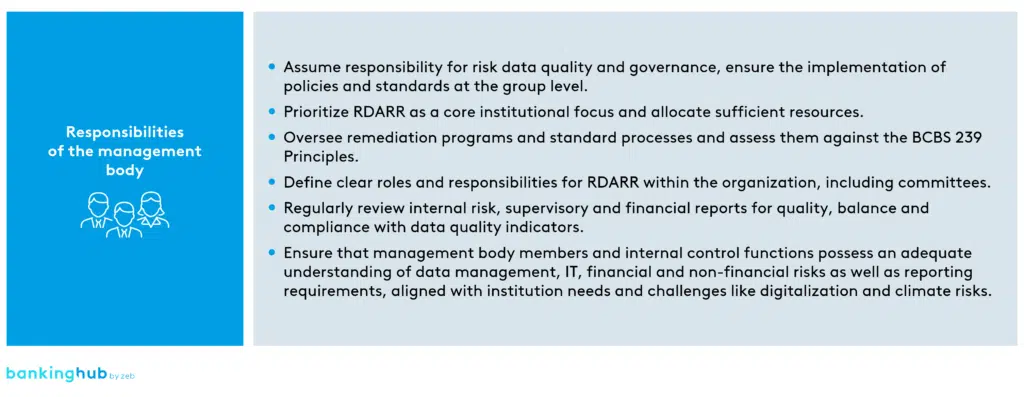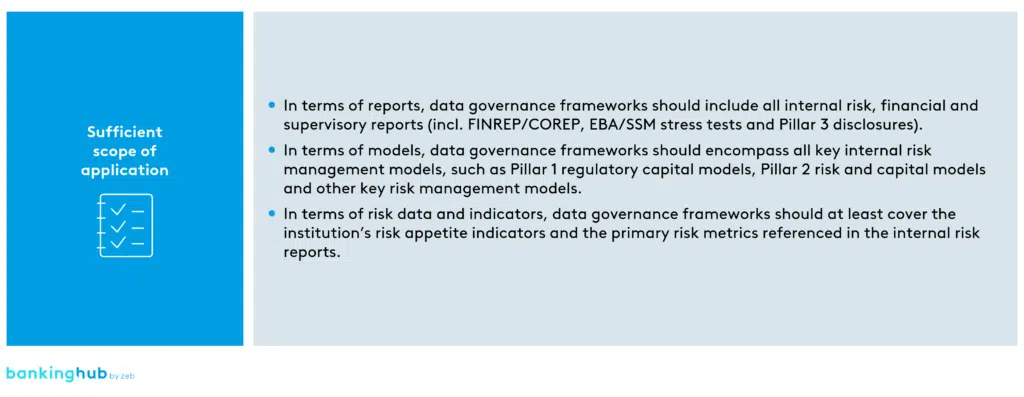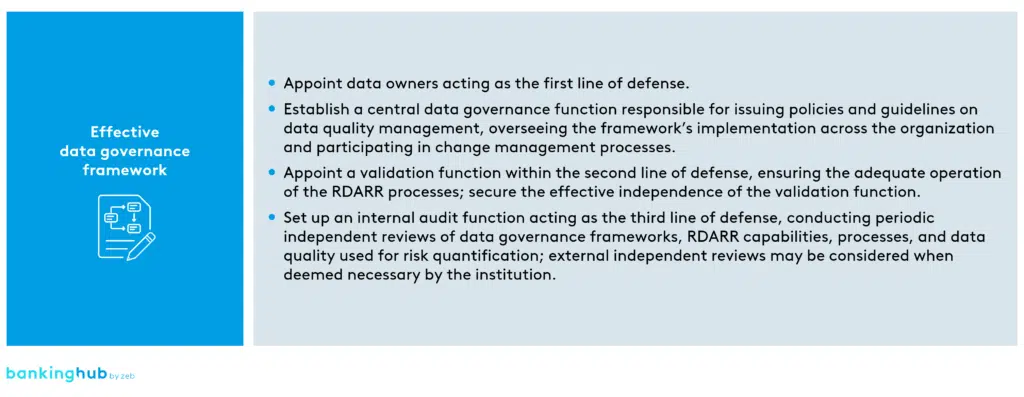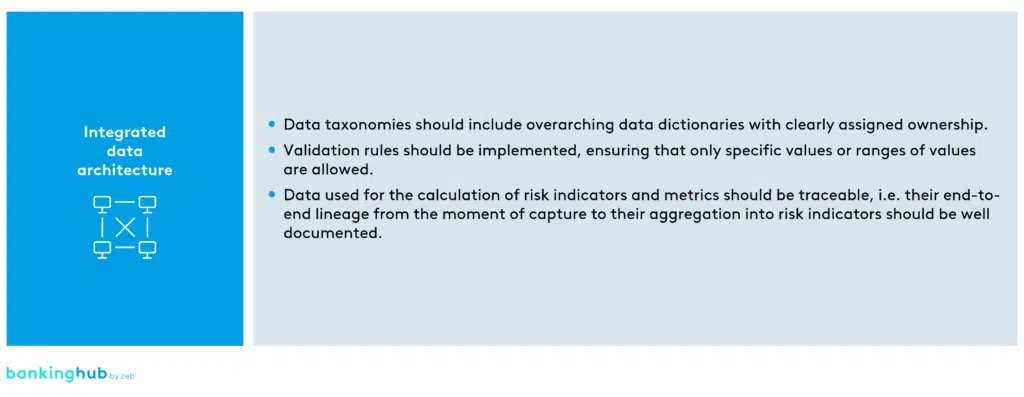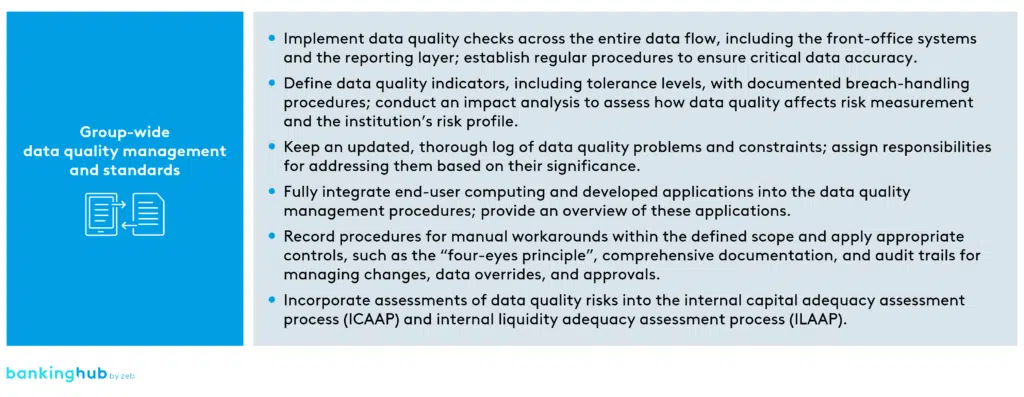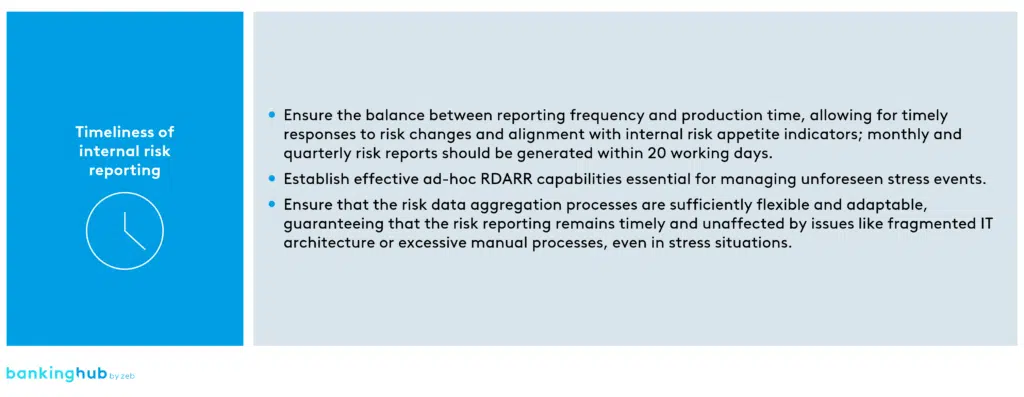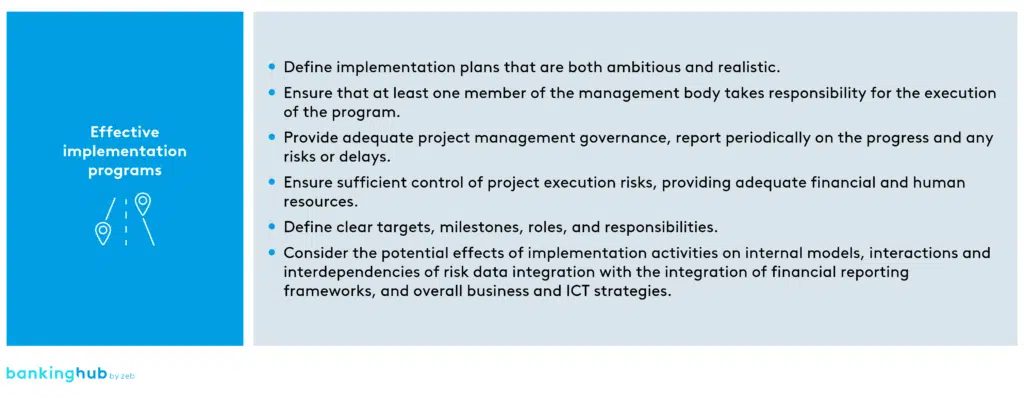
New ECB guidelines on risk data aggregation and risk reporting
Mrusek, F., & Adamus, D. (2023, October 25). 'New ECB guidelines on risk data aggregation and risk reporting'. zeb BankingHub
The importance of aggregating risk data became evident during the 2007–2009 financial crisis and has recently been further underscored through the data collection initiatives undertaken by the ECB’s banking supervision amid the pandemic and other stressful scenarios.
Ever since the ECB’s announcement of its supervisory priorities for 2023–2025 in December 2022, followed by Andrea Enria’s keynote speech during the Annual Conference on Banking Supervision in March 2023, it has become clear that banks will have to revisit the compliance gaps in their risk data aggregation and risk reporting processes.
-
BCBS 239 snapshot
-
The ECB's guidelines
-
Expected supervisory activities
-
Investing in BCBS 239 initiatives - an opportunity, rather than a burden
